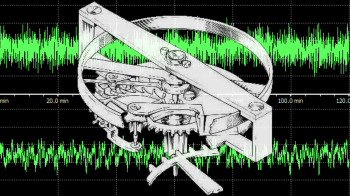We’re not going anywhere near the discussion of whether or not a tourbillon is a complication. That is a conversation that has no end, my friends, especially between strongly opinionated camps that — to be honest — make some good points on both sides. (Which is to say I know where I stand on this, and I will defend my position to the end, but I’m still able to acknowledge the validity of the opposing standpoint from certain angles.) No; this is about exploring assumptions and interrogating concepts which may not be as axiomatic as we once believed.
When’s the first time you ever learned what a tourbillon is, and what it does? My guess is, you were told (or you read somewhere) that the tourbillon is a mechanism that eliminates the negative effects of gravity on the regulating organ. This explanation isn’t wrong, but neither is it right, which makes it a terrible explanation — not wrong enough to be thoroughly banished, but not right enough to actually convey anything of significance, so it just hangs around and takes up the space that could otherwise be occupied by a truly useful definition.
Broadly speaking, regulating a balance is kind of a pain in the neck. You have to come at it from several directions, and I’m not going to go into the finer details here, but it’s like hanging a picture on a wall. First it’s too high, so you fix that. Then it’s too low, so you fix that. Then it’s too far to the left, then it’s too far to the right, now the angle is off, now it’s too high again, and then when you finally get everything just right, you realise you should have painted the wall first. A truly FML situation.
The purpose of putting a tourbillon around a balance is to accumulate all those errors (all those too-high, too-low, too-left, too-right, weird-angle errors) over the time interval of the tourbillon rotation. This rotation usually happens over one minute, but other rotational speeds are known, ranging from 30 seconds to 12 hours. That accumulated error is then compensated for with one single adjustment. Theoretically, your balance could be going six shades of crazy in there, but putting a tourbillon around it will even things out. The neighbours won’t even notice.
Theoretically, I said.
In practice, a tourbillon behaves very much as an amplifier of the regulating organ’s chronometric performance. If your regulating organ is a good boy, if he generally behaves himself and tick-tocks away with Zen-like equanimity no matter how much energy you feed him or how your watch is positioned (a phenomenon known as isochronism), then the tourbillon can help to polish out any anomalous timing errors that occur. Your golden boy maintains his perfect record and is allowed to ascend into the legions of horological cherubim.
If, however, your regulating organ is an anxious, high-maintenance diva who only performs as he should when the conditions are just right, putting him inside a tourbillon is just asking for trouble. Why is that, you ask? Because the tourbillon is a diva too. She consumes energy like I consume white Burgundies. She continuously siphons torque away from the regulating organ, which means that he stops ticking about 30% sooner than if no tourbillon was present. Not only that, the lower allocation of energy going towards the regulating organ means that he is more prone to behaving erratically as the mainspring unwinds, and that he is more vulnerable to shocks. He’s tired, he’s unpredictable, and if you think either of those qualities is good for the timekeeping ability of your watch, I know some Nigerian princes who would love to have your email address. Congratulations, your watch is now in horological hell.
And I haven’t even started talking about tourbillon weight distribution. Don’t worry, I’m writing this on a Friday afternoon; I’m not going to touch that subject.
Here’s the bottom line: Most tourbillon watches do in fact work great, because they are expensive watches and lots of time has been spent making sure that the regulating organ already performs at the highest level possible. No sane person puts a tourbillon around a lousy regulating organ. No one puts a beautiful, artisanal body around a crappy beat-up old car engine. However, the tourbillon does not automatically improve the performance of a watch. It amplifies and it enhances what is already there. It can either boost a movement’s chronometry or completely tank its precision.
Everyone clear? Cool.
Next week: In-house movements. (Is it just me, or is it getting hotter in here?)




